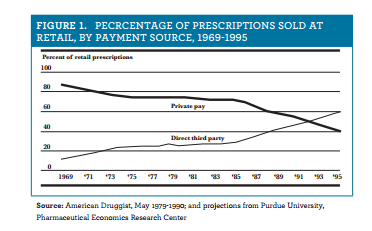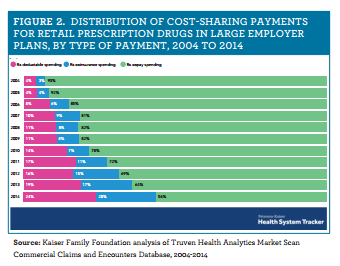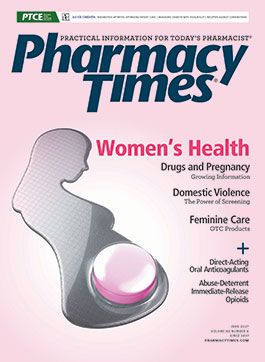Publication
Article
Pharmacy Times
"Cash" Customer Marketplace Comes Roaring Back as High-Deductible Plans Grow
Third-party payers in the pharmacy arena came along in the 1970s as a means by which a patient’s medications could be covered.
REMEMBER WHEN MOST PATIENTS PAID “CASH” FOR THEIR PRESCRIPTIONS?
Third-party payers in the pharmacy arena came along in the 1970s as a means by which a patient’s medications could be covered (or partially covered, as it would eventually be). Throughout the decade and into the 80s, most patients paid for their medications 100% out of pocket, amounts that likely varied quite a bit across pharmacies. Patients based their choices on a combination of cost, convenience, service, trust, and relationship (much like how we shop for many of the necessities in our lives that are not yet commodities).
ALONG CAME THE PHARMACY BENEFIT INDUSTRY, CO-PAYMENTS, AND FORMULARIES
As more medications, with more innovations and more diseases to treat, came to market, drug costs as a proportion of the total health care spend began to creep up beyond the historically steady state of 10% and the pharmacy benefit manager (PBM) came into modern existence. Both dramatically changed the marketplace (and the trajectory of sustainable business principles) for pharmacies. A 1990 Health Affairs article written by Schondelmeyer and Thomas was quite prophetic:
As the proportion of third-party prescriptions rises, retail prescription prices will be less influenced by a competitive consumer market and more dominated by private and government third-party reimbursement policies.1
Co-pays became part of our lexicon, and as the number of “me too” drugs that had the same mechanism of action came to market, formularies became popular and the prior authorization (PA) process, ubiquitous. By 1990, there were more patients with third-party payment than private pay (figure 1),1 and for the majority of the 1990s, the 2000s, and most of the 2010s, the co-pay, with its sister cost-containment mechanism of PA, dominated third-party adjudication. This leveled the playing field for all those decades in which the out-of-pocket prices of drugs for most patients was the same, regardless of the pharmacy that the consumer patronized. Out-of-pocket costs were reduced primarily through intra-class substitutions of generics for branded drugs, with the usual and customary price of the generic rarely being less than the co-pay.

AND THEN CAME CO-INSURANCE
Specialty products came along next that were an order or two more expensive than conventional medications, and co-insurance became a popular mechanism of introducing price sensitivity to the plan member. PBMs often shifted their highest-tiered co-pays to coinsurance. This had the effect of imposing a price sensitivity on the patient while still covering (or subsidizing) the product at typically 50% to 80% of the total cost.
NOW BACK TO CASH
And now we’ve come full circle, and we are seeing the number of full-pay patients increasing rapidly. It started with discount lists as pharmacies began to jockey for customers in what was essentially a level pricing playing field owed to fixed co-pays. Next, differential co-pays were used to drive business into narrow networks based on in-house pharmacies or pharmacies willing to take less reimbursement (or both). But now we again have a growing proportion of patients who are fully exposed to the prices of their medications.
We are now entering the age of health savings accounts (HSAs) linked to high-deductible health plans. These plans fully expose patients to the prices of medications, often with individual deductibles of $2500 or more and $5000 or more for a family. Because HSA plans typically do not discriminate between drug utilization and nondrug utilization, patients with HSAs may as well be considered cash customers for all intents and purposes.
The Kaiser Family Foundation recently conducted a study that analyzed the distribution of cost-sharing payment types for prescription drugs in large employer plans from 2004 to 2014 (figure 2). The results showed a sharp increase in scaled pricing in which the out-of-pocket costs would be more in pharmacies with higher prices and less in pharmacies with lower prices, with most payments having some proportion (or the entire cost) exposed to the enrollee (44% in 2014). All the while, programs like the Medicare Part D star ratings have led to patients paying nothing out of pocket for a 90 days’ supply of medication in certain classes (eg, antihypertensives, antihyperlipidemics, antidiabetics), which are often shipped to the patient’s home via mail order or compel the pharmacy to ensure prescription fill-rate thresholds are met. These trends have had the effect of recreating a pricing marketplace that has not existed in spades since the 1980s.

THIS TIME AROUND, THE WORLD IS CONNECTED
Except this time around, the internet plays a fundamental role in the consumer marketplace, if not for price shopping, then for direct purchase. Companies like GoodRx have successfully inserted themselves between the consumer and the provider (you remember your first experience with Expedia and Travelocity, right?). I need a drug, I want to shop across pharmacies, and I am fully exposed to the price of the drug. Where can I get fast and cheap drugs? For many drugs filled at pharmacies inside of mass merchandisers or grocers, the drug may be provided at no cost in order to increase foot traffic in the belief that the patient—consumer will make additional purchases, such as for milk, tires, candy bars, or a heating and cooling system.
Companies like Blink Health have stepped in and penetrated the space by figuring out how to lower out-of-pocket exposure by working directly with manufacturers who know that price sensitivity is their main adversary. Capsule disintermediates pharmacy by offering delivery services, as a pharmacy, to any patient, taking the service mainstream. And, of course, there’s the recent news about Amazon getting into the retail pharmacy space (See From the Chairman column on page 1).
WILL SERVICES EVER MATTER?
Being cheap, convenient, and accurate is a powerful combination. Yet, as I pointed out in last month’s Editor’s Note, patients with 2 or more conditions make up more than 70% of the health care dollar and more than 83% of all prescription fills. Many of them need ancillary services to coordinate their medications, or they partner with a pharmacist in their medication use plan(s). Will those services be provided by pharmacists, students, and technicians in call centers linked to these modern-day mail order strategies? Will other models of service delivery evolve disconnected from the provision of the product? Will HSAs eventually be the mechanism that pays explicitly for medication management therapy services because coverage has a smaller role in those plans? It’s hard to say how this will all play out, but 1 thing is for certain—nothing is certain about the pharmacy industry right now.
Troy Trygstad, PharmD, PhD, MBA, is vice president of Pharmacy Programs for Community Care of North Carolina, which works collaboratively with more than 1800 medical practices to serve more than 1.6 million Medicaid, Medicare, commercially insured, and uninsured patients. He received his PharmD and MBA degrees from Drake University and a PhD in pharmaceutical outcomes and policy from the University of North Carolina. He also serves on the board of directors for the American Pharmacists Association Foundation and the Pharmacy Quality Alliance.
References
- Schondelmeyer SW, Thomas J 3rd. Trends in retail prescription expenditures. Health Aff (Millwood). 1990 Fall;9(3):131-145.
- Cox C, Damico A, Claxton G, Levitt L; Kaiser Family Foundation. Examining high prescription drug spending for people with employer sponsored health insurance. healthsystemtracker.org website. http://www.healthsystemtracker.org/brief/examining-high-prescription-drug-spending-for-people-with-employer-sponsored-health-insurance/#item-start. Published October 27, 2016. Accessed May 23, 2017.







